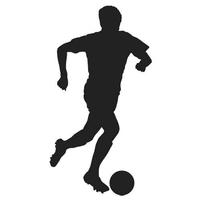


Dear Readers,
During the World Cup, we have all been exposed to new levels of aggressive behaviour while competitors participate in sporting activities. Gouged eyes, broken backs and human bites are all a part of what has recently occurred in a contact sport which used to be a 'gentleman's sport', and are new additions to a slew of well documented injuries which we know 'contact' game sports competitors are at risk of experiencing. Lifeline takes this opportunity to share with readers the common injuries often experienced in sporting events and discusses how to prevent or treat them when they occur.
The most commonly occurring sports injuries are:
Bruises
Cuts and abrasions
Ankle sprain
Groin strain
Hamstring strain
Shin splints
Knee injury: most commonly anterior cruciate ligament (ACL) tear
Knee injury: Patella-femoral syndrome
Tennis elbow
Concussion (blow to the head associated with headaches, dizziness, short-term memory loss, possible loss of consciousness).
Nose bleeds, including a broken nose
Dental damage (breaking teeth, dislodging teeth and jaw fracture)
Dehydration
Stress fracture to the lower limbs (the impact of repeated jumping or running on hard surfaces can stress and crack a bone).
Sports injuries are caused by:
Overuse
Direct impact
The application of force which is greater than the body part can withstand.
Sports injuries can be ACUTE, occurring on the field suddenly, or CHRONIC, owing to poor technique.
Below are some tips to help prevent injuries.
Perform both warm-up and cool-down routines
Consistently do both stretches and strength training in daily routines
Wear appropriate footwear
Tape or strap vulnerable joints
Use safety equipment if allowed and use all required safety equipment
Drink adequate amounts of fluids before, during and after a sporting activity
Have a pre-season health and wellness evaluation done each year
Speak with a coach or sports doctor about any physical concerns and about injury-prevention strategies
Maintain a good level of fitness during off season
Cross-train with other sports to ensure overall fitness and muscle strength
Don't exert yourself beyond your fitness level
Practise good form and technique.
Some first aid tips when injured include:
For joint and muscle injuries:
P - Protect the injured area and keep it from further injury
R - Rest and support the injured area for a minimum of 48-72 hours, restrict activity
I - Ice injured areas by applications of ice packs for 20 minutes every two to three hours repeatedly during the first 48-72 hours
C - Compression. The application of firm elastic bandages above and over and below the painful site
E - Elevate and raise the injured site above the heart level to minimise swelling and pain
In addition, over-the-counter pain relievers are often enough to reduce pain to tolerable levels or even get rid of pain.
At this time, alcohol intake should be avoided as it increases bleeding and swelling. Massage at this time also delays healing and worsens swelling and bleeding, and applying heat will worsen any bleeding.
First aid for nose bleeds:
Stop the activity
Sit with the head leaned forward
Pinch the nostrils and breathe through the mouth
Hold the nose for at least 10 minutes
If bleeding persists, then seek medical advice.
First aid for dislodged teeth:
Rinse the tooth in water or milk and see the dentist immediately with it. Sometimes the tooth can be saved.
Emergency situations:
The sports physician should attend to any athlete with:
Prolonged loss, of consciousness
Neck or spinal injuries
Broken bones
Eye injuries
Injuries to head, face or neck
Abdominal injuries.
If no physician is on the spot, then don't move the athlete, but call an ambulance immediately.
When pain persists after a sports injury occurs and first aid measures have been applied, then a doctor should be seen to evaluate the injury. What is thought to be a sprain may well be a fractured bone.
Signs of a more serious injury include:
Deformities in a joint or bone
Inability to bear weight on a joint or limb
Excessive swelling
Deep changes in skin colour
No improvement after PRICE therapy.
If these conditions exist, then see a physician urgently.
Many athletes and amateur sports enthusiasts will experience 'shin splints'. These are pains felt down the front of the lower legs and usually occur with jogging and running. Resting the legs, applying ice and taking over-the-counter painkillers usually solves the problem. Sometimes, the pains persist and a doctor should be seen as occasionally a 'stress fracture' occurs in the shin bone which will require a prolonged rest period to heal.
Cheerleading is a new and popular athletic sport increasing in popularity in Jamaica. While not as frequently associated with injuries as many other sports, cheerleading injuries tend to be more severe and make up at least 50 per cent of the catastrophic injuries in females. Cheerleading injuries affect all areas of the body, but most commonly the wrists, shoulders, ankles, head and neck.
In an effort to prevent the catastrophic injuries, restrictions are usually placed on stunts. There are height restrictions to human pyramids, and there must be a number of spotters present for each person lifted above shoulder level. Base cheerleaders must be in direct contact with surface and should remain stationary. Suspended persons should not be inverted and should not rotate on dismount. Mats should be used as often as possible and tired, injured or ill individuals should not perform. They jeopardise everyone else in the group. Stunts should not be attempted without proper training and without proper supervision.
Physiotherapy is the mainstay of rehabilitation of most sports injuries and returning to athletic sports before being given permission by the doctor or the physiotherapist to do so is a prescription for disaster. Poorly healed injuries, when challenged by sport, may become chronic and permanent!
Write to: Lifeline,
PO Box 1731,
KGN 8 AJM
